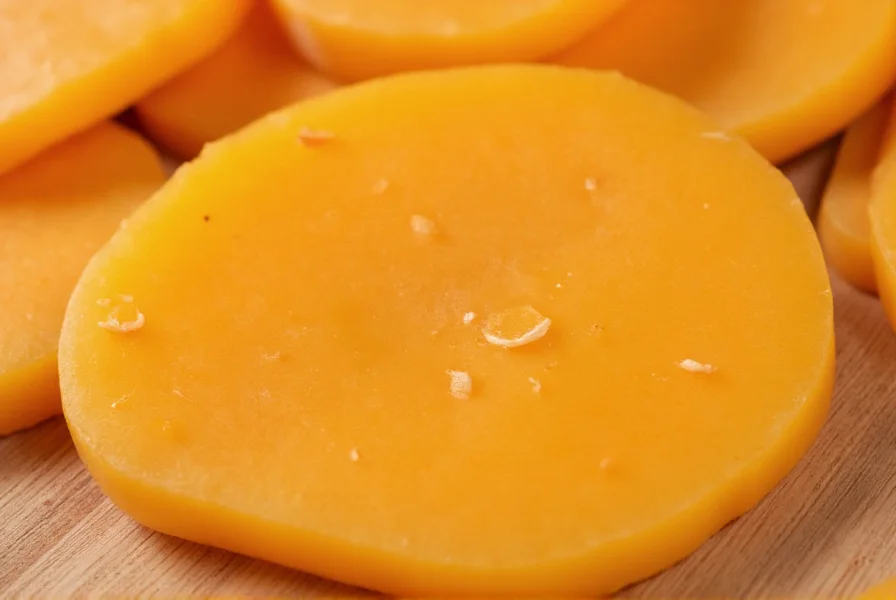Understanding ghost pepper cheese characteristics helps both adventurous eaters and culinary professionals incorporate this extreme ingredient safely. Unlike standard pepper jack varieties, ghost pepper cheese delivers immediate, intense heat that can overwhelm unprepared palates. The cheese base—typically cheddar, cream cheese, or queso fresco—provides temporary cooling relief before the capsaicin's delayed burn intensifies.
Understanding Ghost Pepper Cheese Characteristics
Ghost pepper cheese stands apart from other spicy cheeses due to its extreme heat profile. While jalapeño-infused cheeses measure 2,500-8,000 SHU and habanero varieties reach 100,000-350,000 SHU, ghost pepper cheese enters dangerous territory for heat-sensitive consumers. The Bhut Jolokia pepper's capsaicin concentration creates a delayed reaction—initial dairy creaminess masks the impending burn that peaks after 30-60 seconds.
| Cheese Type | Scoville Range | Heat Duration | Best Applications |
|---|---|---|---|
| Ghost Pepper Cheddar | 750,000-1M SHU | 3-5 minutes | Burgers, macaroni, cheese boards |
| Ghost Pepper Cream Cheese | 500,000-800,000 SHU | 2-4 minutes | Bagels, dips, stuffed mushrooms |
| Ghost Pepper Queso Fresco | 600,000-900,000 SHU | 4-6 minutes | Tacos, salads, grilled dishes |
Safe Handling Practices for Extreme Heat
Working with ghost pepper cheese requires precautions similar to handling pure capsaicin. Always wear nitrile gloves when cutting or handling, as the oils penetrate skin and transfer to eyes or sensitive areas. Never touch your face during preparation. The dairy matrix doesn't neutralize capsaicin's effects—just delays their onset.
Consumption safety involves strategic pairing. Dairy products like milk or yogurt provide temporary relief through casein proteins that bind capsaicin. Avoid water, which spreads the oil. Start with pea-sized portions to gauge tolerance—many consumers underestimate ghost pepper cheese's delayed heat curve. Those with gastrointestinal sensitivities should avoid this product entirely.

Culinary Applications and Flavor Pairing
Ghost pepper cheese shines when used as a finishing element rather than primary ingredient. Professional chefs recommend these techniques:
- Controlled infusion: Grate small amounts into warm dishes just before serving to preserve volatile heat compounds
- Temperature management: Add to cooled bases (like cream cheese dips) to prevent accelerated capsaicin release
- Balance with sweetness: Pair with honey, maple syrup, or fruit preserves to counter extreme heat
- Layered heat approach: Combine with milder peppers (jalapeño, serrano) for complex heat profiles
Popular applications include ghost pepper cheese-stuffed burgers (where the melting cheese creates heat pockets), artisanal grilled cheese sandwiches with apple slices, and as a bold topping for baked potatoes. For cheese boards, position it at the far edge with clear warning labels and cooling accompaniments like sour cream dip.
Ghost Pepper Cheese Alternatives
For those seeking intense but manageable heat, consider these alternatives:
- Scorpion pepper cheese: Slightly less intense (700,000-1.2M SHU) with fruity undertones
- Carolina Reaper cheese: More consistent heat (1.4-2.2M SHU) with quicker burn duration
- Chipotle-infused cheese: Smoky flavor at 2,500-8,000 SHU for approachable heat
- Ghost pepper powder blend: Mix regular cheese with 1/8 teaspoon ghost pepper powder per ounce
Home cheesemakers should exercise extreme caution when attempting DIY ghost pepper cheese. Improper handling can contaminate entire batches and kitchen surfaces. Commercial producers use specialized equipment to contain capsaicin during production—a process difficult to replicate safely at home.

Finding Quality Ghost Pepper Cheese Products
Reputable producers clearly label Scoville ratings and ingredient proportions. Look for artisanal creameries that specify their pepper sourcing and infusion methods. Avoid products with vague descriptions like "extra hot" without quantitative heat measurements.
Storage considerations matter—ghost pepper cheese maintains potency longer when vacuum-sealed and frozen. Thawed products may show intensified heat as capsaicin redistributes. Always check expiration dates, as degraded dairy can amplify perceived heat through bacterial action on capsaicin compounds.
Ghost Pepper Cheese Safety Considerations
Medical professionals warn that extreme capsaicin exposure can trigger adverse reactions including:
- Temporary loss of taste sensation lasting hours
- Severe gastrointestinal distress in sensitive individuals
- Skin irritation requiring medical treatment
- Respiratory issues from airborne capsaicin particles
Those with inflammatory bowel conditions, acid reflux, or recent oral surgery should avoid ghost pepper cheese entirely. The delayed heat response often leads consumers to consume more than their tolerance threshold before recognizing the intensity.
Conclusion
Ghost pepper cheese represents the extreme edge of spicy dairy products, demanding respect for its intense heat profile. When handled properly and used strategically, it can elevate dishes with complex heat that regular spicy cheeses cannot match. Understanding its delayed reaction time, proper handling techniques, and appropriate culinary applications ensures both safety and enjoyment. Whether you're a heat enthusiast or professional chef, approaching ghost pepper cheese with knowledge transforms it from a novelty item into a valuable culinary tool with distinctive flavor possibilities.











 浙公网安备
33010002000092号
浙公网安备
33010002000092号 浙B2-20120091-4
浙B2-20120091-4